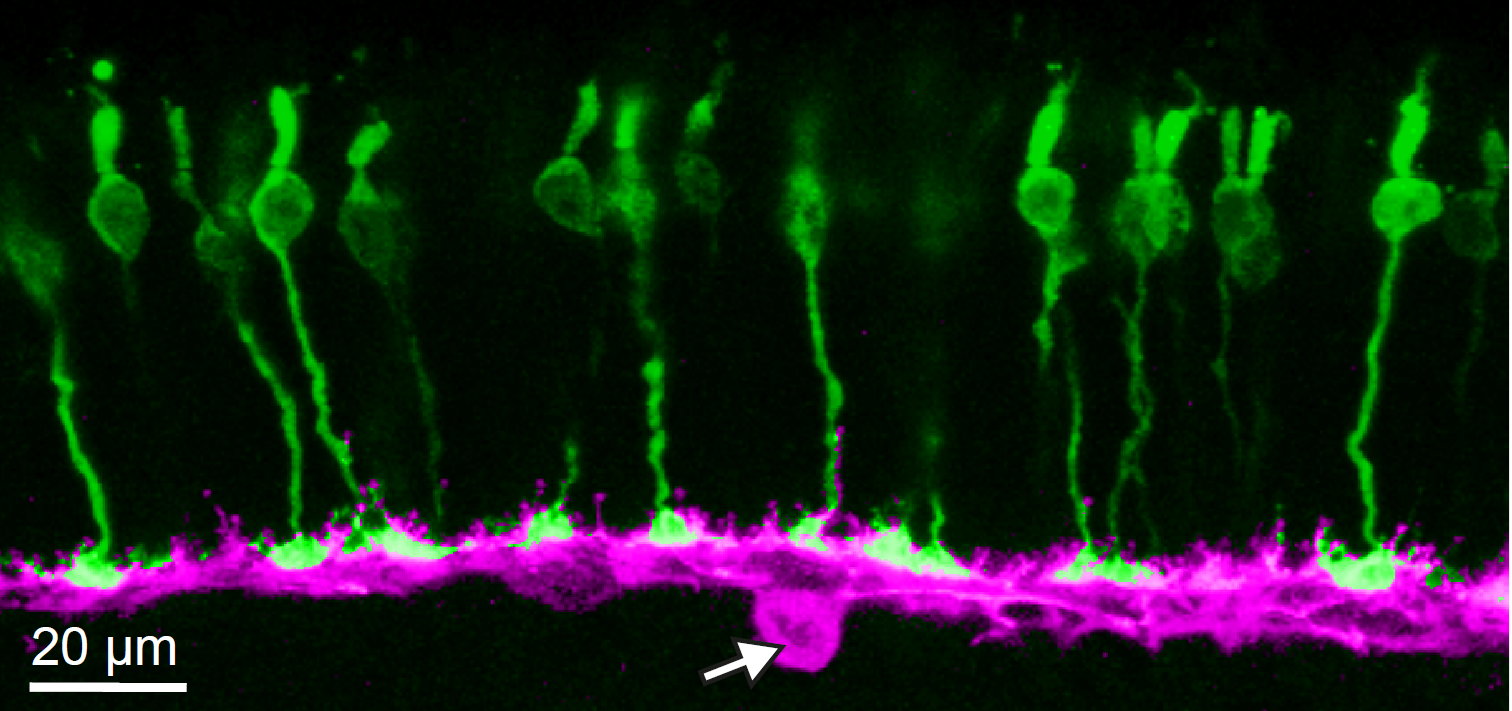Paper on how horizontal cells shape response dynamics of retinal ganglion cells in "Neuron"
Our microelectrode array technology greatly contributed to find out how diverse retinal functions arise from feedback at first visual synapse. Six distinct effects in response characteristics of ganglion cells were found as reported in Neuron.
To understand the mechanisms of vision and to predict the outcomes of visual diseases, it is essential to understand how the ~30 retinal output channels represent the visual world, and how their different functional properties arise from the architecture of the retinal circuits. A set of experiments combining genetics, viral and molecular tools, high-density microelectrode arrays, and computer models was performed in collaboration with the Roska group of the IOB of the University of Basel, and R. da Silveira of ENS, Paris. The combined experimental and theoretical work revealed, how a single interneuron type can differentially shape the dynamical properties of distinct output channels of a brain region. The work was published in Neuron: A. Drinnenberg, F. Franke, R. K. Morikawa, J. Jüttner, D. Hillier, P. Hantz, A. Hierlemann, R. A. da Silveira, B. Roska, "How diverse retinal functions arise from feedback at the first visual synapse", Neuron 2018, Volume 99, Issue 1, Pages 117-134.e11.
external page Neuron has established itself as one of the most influential and relied upon journals in the field of neuroscience and serves as one of the premier intellectual forums for the entire neuroscience community.
